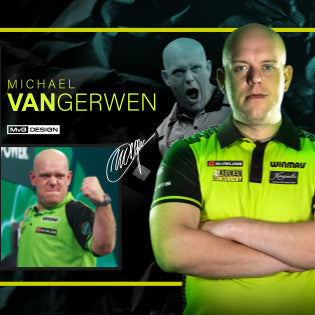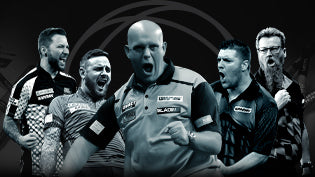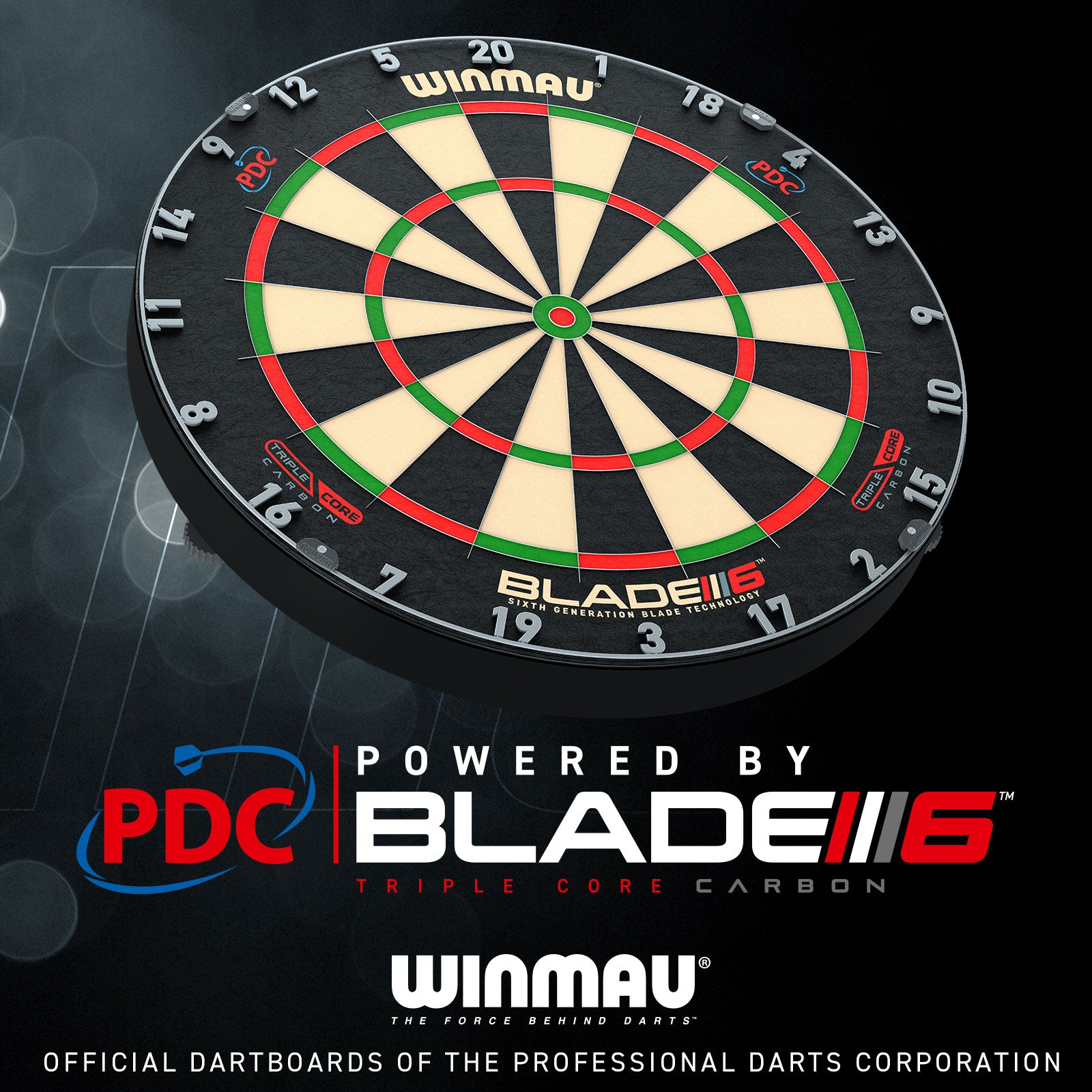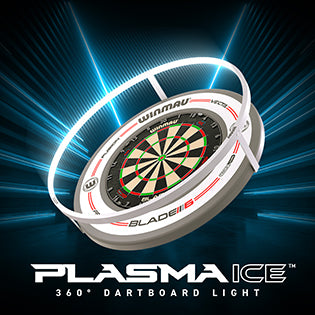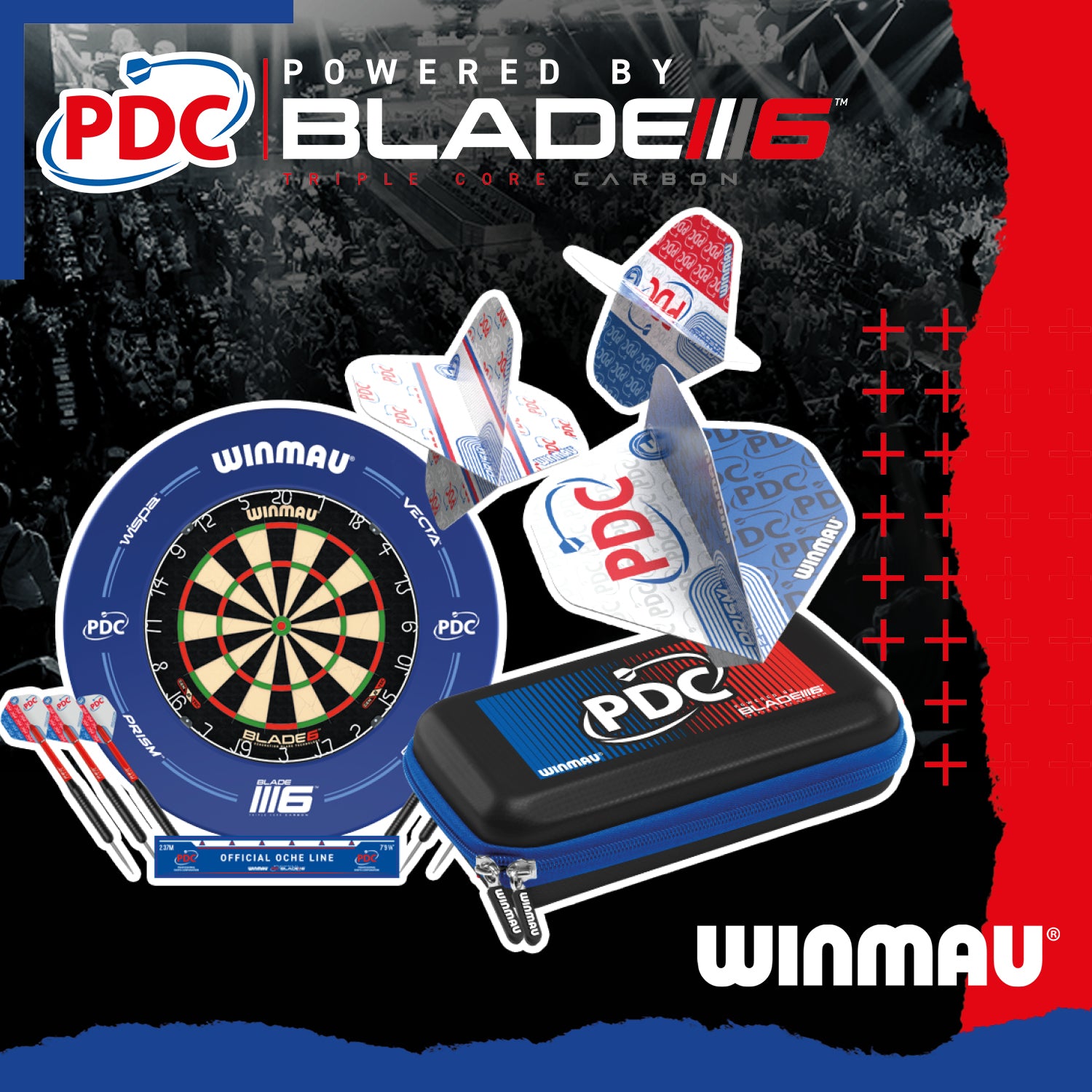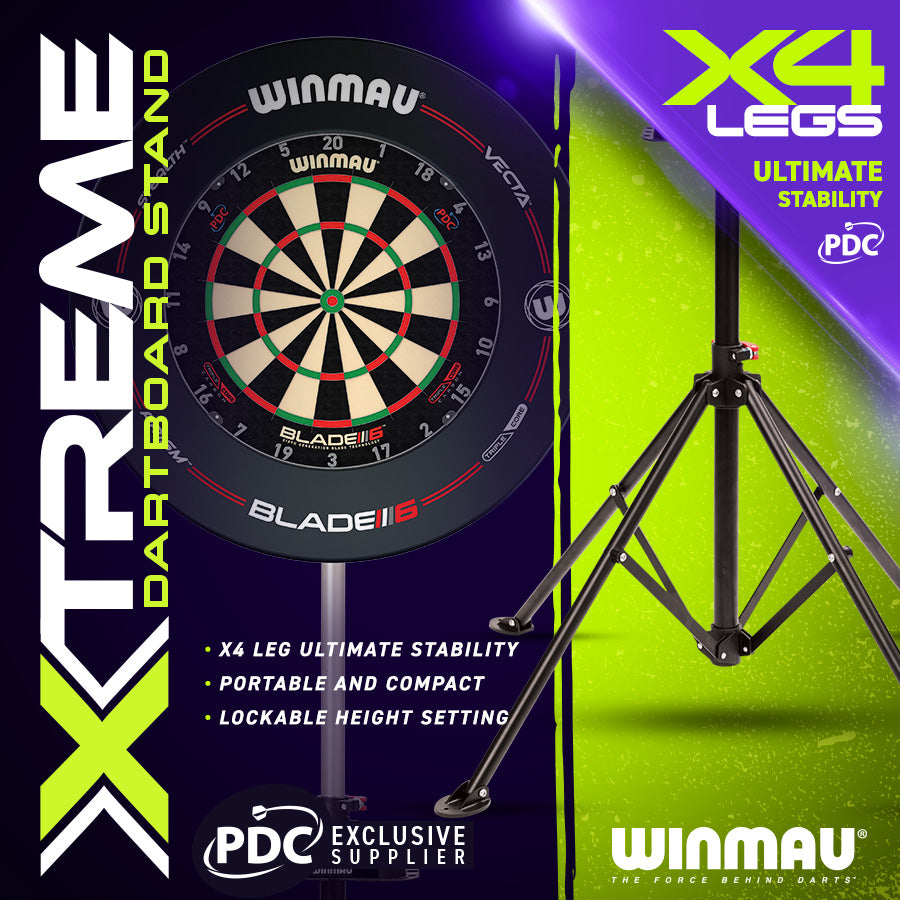DR DARTS NEWSLETTER - PATRICK CHAPLIN - SEPTEMBER'23 EDITION
DARTS HISTORY
(aka Dr. Darts’ Newsletter) Issue 162 www.patrickchaplin.com September 2023
JIM MACNEIL
Over the past decade and more, I had always kept in touch with Jim MacNeil, a Scottish darts player but, in more recent years, has been compiling a history of darts in Scotland.
We regularly corresponded by email, chatted occasionally on the phone, or exchanged information by post.
But, as with such ‘distance’ friendships, we never met. Again, as happens in such friendships, I had no reason to contact him for several months and I had not heard from him. Nothing odd in that.
Then, in early August, I was contacted by Ann Miller, the daughter of the late Frank Quinn, the former President of the Scottish Darts Association (SDA), asking if Jim’s proposed book on the history of darts in Scotland had been published. I told Ann that I would contact Jim to find out. (The undated photograph, above, shows Jim (second from right) shaking the hand of England International, Willie Hetherington. Location unknown.)
I was surprised and saddened to receive a reply from Tia, Jim’s wife, to say
“Jim passed away on 22 June so his book will never be published. I have no idea at this time what will happen to all the research and work he had done on this and all the other history he has collated.â€_x009d_
Of course, I immediately sent my sincere condolences to Tia, Jim’s family and friends on their sad loss. RIP Jim.
In memory of Jim, I reproduce an article from the Peoples Journal, dated 30th September 1978 titled ‘Push-button darts’ which I hope readers will enjoy. It may bring some memories to readers old enough to remember the introduction of electronic scorers.
Proficiency at mental arithmetic is no longer a standard requirement for darts players at one hotel, at least, in Inverness. At the Gellions Hotel, a pocket-calculator type scoreboard has been installed. It has 12 buttons for each player. Before starting their game, the players just have to press a button marked ‘C’ twice, to select the game they want, 301 or 501, then push the ‘S’ button to set the game.
|
Barmaid Betty Nicol and Gellions ‘A’ darts eam captain, Jim MacNeil, check the new electronic scoreboard. Behind Betty is the traditional way of marking, with chalk and blackboard. |
Thereafter each score is pressed out on the numeral buttons and is automatically deducted from the total on pushing the ‘S’ button. The total is illuminated and shows up well, even from a distance.
The electronic scoreboard, costing about £50, has been specially designed for the game of darts and hotel proprietor Mr David Irvine said it was on a trial run. If successful, a similar scoreboard may well be provided for the pub’s other dartboard.
The Gellions ‘A’ darts team captain, Jim MacNeil, is in favour of the new system, although it was banned by the Inverness Darts Association even before it made its appearance in the town.
He reckons that it could save arguments over bad figures, when a five is perhaps mistaken for a three, and it’s much cleaner.
Some darts players do not like to play after having had chalk on their fingers and the new system disposes of this problem. It also helps the players who can perhaps play darts well but who has problems with subtraction.
FIRST HOME INTERNATIONAL – FEEDBACK – THE TROPHY
In last month’s issue I featured a photograph of a Home International trophy (shown, left) provided by Chris Lovell who asked if it was the original.
I was sure that it wasn’t for the reasons I gave. I am now able to provide an image of the first trophy, shown here on the right, that was presented to Tommy O’Regan, the Captain of the victorious England team, by Lord Beaufort in July 1973. As you can see, they are totally different trophies.
So, the question remains, “When was the BDO trophy first competed for; the second or the third Home International?â€_x009d_ If anyone can clarify this, please contact me at patrick.chaplin@btinternet.com.
JIM CLARK – PART TWO
In this issue, James Clark, son of the former St. Dunstan’s Four team member, Jim Clark, continues his memories of his father who is pictured below, left, on the left with his uncle, John Hutchings (centre), and another player (unnamed) after winning the W. H. Pendrill trophy, mentioned in #161. James now continues the story.
I now want to recall just two more events, firstly meeting a darts legend and secondly recording what turned out to be Dad’s last highlight at the dart board.
I can’t remember if it was in the street or in the Brown Bear when Dad met an old friend who turned out to be Tommy Barrett. [Tom, in his time, had also played for the St. Dunstan’s Four.] I was introduced and they proceed to ask each other how they were doing. After a short while they parted ways and I asked who he was. “I used to play darts with him.â€_x009d_ “Was he any good?â€_x009d_ I asked. “He should beâ€_x009d_ said Dad, “He has a dart board in his bedroom and practices a lot.â€_x009d_
As I ponder this recollection, I thought that Dad regarded this approach as somewhat eccentric. Dad was old school who honed his skill in a bar playing with his mates, whereas Tommy’s approach had become more professional. Maybe this was the changing of the guard and Tommy was a pathfinder, being one of the first players to endeavour to take darts to a new level. As you will know, in the early 60s Tommy won back-to-back News of the World tournaments so his approach paid off. Another thing I remember is that Tommy was no spring chicken at the time of our meeting so I would be interested to know how old Tommy was when he won his two championships
[No problem, James. Believe it or not, Tom Barrett was 52-years old when he won the News of the World, London and Home Counties divisional title in 1962. That season he was knocked out in the first round 2-1 by Eddie Brown, the Eastern Counties Divisional champion, who eventually won the title.
As we all know, Tom returned to the Alexandra Palace to take the title in 1964 and then won it again in 1965 to become the first player to retain his title. By the time he won ‘the double’ he was 55 and had been playing darts seriously since he was seventeen. The image (right) shows Tom on the cover of his autobiography titled DARTS which was published in 1973 when Tom was 63.]
My final recollection requires me to describe a darts game with which you may not be familiar. I really don’t know its name but I shall call it “Halve itâ€_x009d_. It is a game that could involve multiple players. The rules were very simple. At the outset of the game 10 target numbers were identified, for example 17, 13, 19, etc.
The target numbers were listed horizontally across the top of a blackboard and the participants names were listed vertically.
So, participants faced ten rounds, in turn, to hit the assigned target. Only darts hitting the assigned target scored and participants scores were accumulated with each round. Participants not having any darts hitting an assigned target had their accumulated score halved. The winner being the player with the highest accumulated score.
[I am sure that many readers of Darts History will have played ‘Halve It,’ or a version of it, during their dart-playing days. I certainly did. Or maybe you still play it today.]
For quite some time the Brown Bear function room on Sunday lunchtime was the place to be. The game I have described was spiced by a bookmaker being in attendance. He organised an entry fee that was paid out in prize money to first second and third. The real fun was that participants could place bets on themselves or others. The prices developed as the game progressed. It was fun because people became more vocal as the game became more critical when money was involved. One of these games proved to be a wonderful finale for Dad and, looking back, it’s my best memory of him playing darts.
(Photograph of the famous Brown Bear (long demolished) pub, provided by Eddie Norman.)
Imagine a room with, say, 50 people as the final round commenced. By the final round four or five lads had a mathematical chance of winning, one of which was Dad. The clear leader was a very good young player whose mates had been backing him throughout the game. It was not looking good for the bookie. The final target was 18 and the youngster had seen off everyone, except Dad. But it was really all over because Dad needed three treble 18s to overhaul the youngster.
I’ll never forget it.
Dad walks up, puts the first dart in the treble. He was not a quick thrower; took his time and put the second dart in the same bed. Untroubled by murmurs of the crowd his first two darts were joined by the third.
Dad was well liked and the cheer that went up for him was amazing. The bookie threw his arms up in the air and did a dance on the spot because he had no liabilities on Dad. It was mayhem; even the landlord came in to see what had happened. Everybody was congratulating him, even the boy he beat. The bookie gave him an additional tenner [ten pounds] in addition to his prize money.
A wonderful memory.
Well Patrick, I have enjoyed delving into my memory banks and give thanks that I am still able to recall so much. All this looking back came about as a result of my grandchildren asking me to produce a memoir about my childhood and early life and, indeed, I have my own story to share. But I am so glad that I was able to make contact with you because now Dad has a small place in the archives of darts history and I will now be able to include in my memoir a nice overview of their great-grandfathers exploits.
I close by recalling a day in the early 1980s. While visiting Dad, we were watching darts on the TV. I remember saying something to the effect, “These boys are pretty good,â€_x009d_ to which he replied, “Old Joe Hitchcock and Jim Pike would give them a run for their money!â€_x009d_
My thanks to James Clark for his memories and his photographs relating to his dad, Jim Clark, member of the famous St. Dunstan’s Four. If this brings back any memories for any readers of Darts History, either about the Four, members of the team, or even the ‘famous’ Brown Bear pub or even playing Tom Barrett, please contact me at the usual email address, patrick.chaplin@btinternet.com.
TALKING OF JOE HITCHCOCK…
I am grateful to Paul Manning for sharing the following memory about the ‘Treble Twenty Wizard,’ Joe Hitchcock.
Hi Patrick, I lived with my parents in the Royal Marine pub/hotel in Taunton and I am now in the process of writing my memoirs. Joe is very part of my story.
[The image, above, shows Joe in action, extracted from the 1976 Harrows catalogue. © 1976 Harrows. Used with permission.)
I think that Joe stayed with us for many years and I had the privilege of travelling with him to various clubs. Joe was promoting Watney’s Red Barrel so I have seen him play darts and the infamous 4-inch round, wire nails. When I got home from work, I would play darts before he left. “Just warming up,â€_x009d_ Joe would say.
What a lovely guy he was; so many stories to tell, I will send you my stories as soon as I have finished and polished up the final sentences.
To date I don’t know of any professional dart player who would even get close to what Joe Hitchcock did; 180’s all night long and that finish of double 16, looking at the player and saying “One for the loser.â€_x009d_ He never missed once.
JOHN HOWIE
Back in June (#159) I mentioned John Howie and thanked him for sending me a number of Patents relating to darts. John, now retired, ran a well-known darts stall in Glasgow, a stall well-remembered by subscriber James Hope who wrote:
Hi Patrick. Just finished reading the Dr Darts history newsletter. Another excellent article as always. John Howie is a very good friend of mine and he ran a darts stall at Glasgow's Barras market in Glasgow's East End for many years. I used to buy my darts stuff there up until John retired a few years ago. I chat to him every now and again on Facebook.
This made me think where you bought your darts; at a ‘proper’ shop or at a market stall or perhaps you ‘inherited’ them from your dad, mum or a friend who wanted to encourage you to play and play well. I bought one of my first sets of darts in the mid-1960s, a set of Unicorn Tavern darts) in a sports shop, Pope & Smith, in Chelmsford, Essex, (which is still there but in a different building) but purchased accessories from the local market there which was manned by a guy from Basildon (whose name escapes me) who I talked darts with every week. Let me know about your first set on patrick.chaplin@btinternet.com.
(Image, above left, shows my original Tavern darts and next to them a set made for me by a brother-in-law of mine during his lunchtime at the engineering firm he worked, made from a ‘spare’ piece of chrome. I still use them today.
SIR MICHAEL PARKINSON
The passing of Sir Michael Parkinson at the age of 88, probably the best chat show host ever-produced by the UK, was announced on Friday 17th August.
A life-long lover of cricket and hardly the greatest supporter of darts (to say the least) but the history of our sport should report that there was one occasion, when he was invited to present the prizes and the cheque for charity of the proceeds from the Second Home International in 1974, he accepted and played a match against the Man of the Match, Cliff Inglis!
Contacting me on hearing the news of ‘Parky’s passing, Eddie Norman told me
I wrote to him and met him to ask if he would present the trophies at the Second Home International in London in September 1974. People said he would never answer me. But he did, by return, and I met him beforehand in London to explain about the championship and he was interested and made a lot of notes for the great on-stage speech he gave at the presentation on the day. A real nice guy, turned up really early, and left very late. He also collected a £5000 cheque for charity from the event that, at that time, would have bought a house.
The photograph (above, right) shows Sir Michael presenting the Home International winner’s trophy to England’s Captain, Willie Etherington. (Image © PC/DW Archive. Used with permission.)
The very last game of the tournament decided the championship with England’s win over Wales. Devon’s Cliff Inglis had stepped up to the stage at the Lyceum, London, for the final game against Wales’ David Porter. England and Wales were tying with eleven points each. Cliff’s final darts to take the title earned him the Man of the Match Award.
On a day of surprises, perhaps the biggest surprise was when Darts World reported as follows:
Running a television chat show prepares you to meet all sorts of people in all sorts of situations. Michael Parkinson certainly looked at home when he presented the prizes at the Home International in London last month.
In fact, he was so relaxed he had the temerity to challenge Man of the Match, Cliff Inglis, to a quick game of 301. Well, he was on 301…Cliff had to chase 801.
(Image, above, © PC/DW Archive. Used with permission.)
He quickly learned that there’s more to this darts business than throwing a dart. He lost, but had the satisfaction of getting down to a double. [Double 2]
Just for the record here are his scores: 3, 41, 79, 30, 60, 21, 26, 23, 14.
RIP Parky
THE NDAGB NATIONAL TEAMS CHAMPIONSHIP 1975
On 9th August, I received a fascinating email from Ron Comley in which he recalled memories of his father (also named Ron) taking part in what had, by 1974-75, become the NDAGB (National Darts Association of Great Britain) but was originally known as the Lord Lonsdale The People Team Challenge Cup. Teams still fought out for the prestigious (and very large) Lord Lonsdale trophy, even though The People had ceased sponsoring the tournament at the end of the 1961-62 season. Ron told me:
Whilst writing, I thought I’d mention that my father - also Ron Comley - played for Courage Social Club, Reading “Câ€_x009d_ Team who won the NDAGB National Sixes Competition in 1975.
At that time, we lived in a small village, about 10 miles from Reading, [Berkshire] called Beenham, and my dad was the Secretary and Steward of Beenham Working Men’s Club, who had darts teams playing three nights a week in various local leagues.
I worked at the Courage Brewery and my dad worked for another local company and we used to meet most lunchtimes in the Courage club for a few games of darts. One day, the steward of the Courage Club asked my dad if he had entered Beenham Club into the National Sixes competition to which my dad said no, he wasn’t familiar with it.
As it was close to the closing date for teams to enter, Beenham team was entered as the Courage “Câ€_x009d_ team. You’re probably ahead of me now - they went on to win the competition!
The six team members and two reserves (who never played in any of the rounds) were local to Beenham and neighbouring villages. The Grand Final was played in Hull and a 52-seater coach was hired to take the team, their families, and supporters the 220 miles to Hull.
The magnificent sterling silver Lord Lonsdale trophy (by far the best trophy of any kind that I’ve ever seen) was engraved: Courage Social Club C Team (“the Beenham Boysâ€_x009d_). My dad insisted that the trophy should sit in the Courage Club, but eventually agreed with the steward that it should reside for six months at the Courage club and six months at Beenham WMC.
(The magnificent trophy is shown here being held (left) by George Russell, the captain of the Eyres Monsell team from Leicester who lifted the title in 1978).
It was a really big deal at the time and was featured in the local newspapers. Dad designed and had eight blazer badges made and 100 badges/patches, the same size as the NDAGB one.
My father passed away in 1982 and I now have the Grand Final programme, badges, and photos of the team with the trophy.
Have you any idea where the Lord Lonsdale trophy is now?
Thanks Ron. I will answer your question “Where is the Lord Lonsdale trophy now?â€_x009d_ in the next issue of Darts History.
FINALLY, A REMINDER
When you change your email address, and wish to continue receiving Darts History, please drop me a line so that I can record the change. Otherwise, I lose you.
MY RESEARCH IS SPONSORED BY
NOTE: Text © 2023 Patrick Chaplin or as shown. Images © Patrick Chaplin or as stated or sourced. Neither text nor images can be reproduced without prior permission of the copyright holder(s). Sponsors website: winmau.com.





